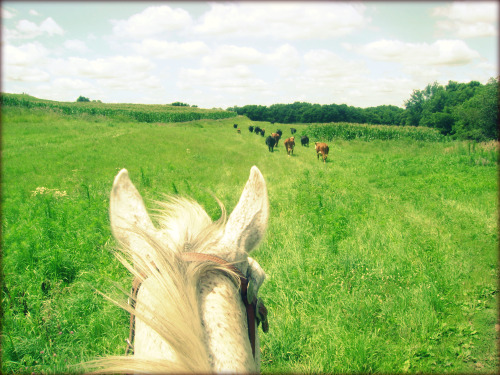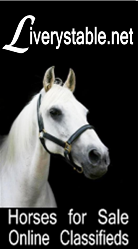
It’s the time of year to get cattle out to pasture, and that always means lots of horseback time for me. As a kid, I looked forward to the spring cattle drives, knowing it would be a great way to test out my horse and gauge the progress we were both making in becoming solid ranch hands.
Cattle work did wonders for putting a sharp edge on a horse. If you were riding a green one, having a moving herd in front of you gave the colt something to follow. Our horses all had the cow sense bred into them, so it could literally be a colt’s second ride and they’d be turning after a cow that was lagging, or one that had stopped to graze behind the herd. Horses learn so much faster when they’re given a job to do, and those days of trailing cattle did wonders for our horses.
Taking cattle to summer pastures usually required some sorting work, as we generally would start out with a large herd, maybe a couple hundred head. The drive would take us through several different pastures where we would start to drop off matched pairs, counting aloud so that all the riders could keep tally, until we reached the number of cattle to stay in that pasture. All the while the main herd would keep on moving, through to another pasture where we would drop off more matched pairs.
There would always be a few ornery cows who made up their minds to continue on with the herd even though they had been sorted off with their calves, and this often made for some quick horse work to try to change their minds. My sisters and I secretly welcomed this kind of thing, knowing it would be a test of our horse’s skill to turn them back and keep them from rejoining the herd. We were always looking for ways to brag on our horses, and to handle a cow well and put her deftly back in her place really needed no words.
Working cattle with my dad, you had to know how to read his mind. If you weren’t in the right place at the right time and doing the right thing, you may as well have stayed home. Dad didn’t tolerate kids goofing off at the cows’ expense, and we were taught to handle the cattle quietly and with the least amount of effort possible. My dad was thoughtful of a horse’s work load, and would avoid making a horse climb a steep hill, or go into a gully or anyplace with treacherous footing. When we were training colts, we would often make a colt walk up to spooky things, or cross a cow trail or washed-out gully. Dad would chide us, telling us that making a horse do stuff he wouldn’t normally want to do would cause him to be more spooky and less trusting of the rider. As I have learned more about horses, I have come to agree with Dad’s opinion on that, and I think having a horse trust the rider is so important.
Today we have cattle on a much smaller scale, and we put them in a trailer to take them to summer pasture. Of my own horses, only one of them has ever worked cattle, and the other two are just green broke. I’m thinking we really need to get them working around cattle, as the rest of their behaviors will improve as a result. I keep looking back to the colts I trained when I was a kid, and they always had a good handle on them by the age of three, and were solid horses you could put a beginner on by age five. The ranch work shaped them and changed them into working horses. I am convinced that every horse needs a job–if it’s not working cattle, make it something else. But horses left to themselves are like children left to themselves….hard work never hurt anybody.

